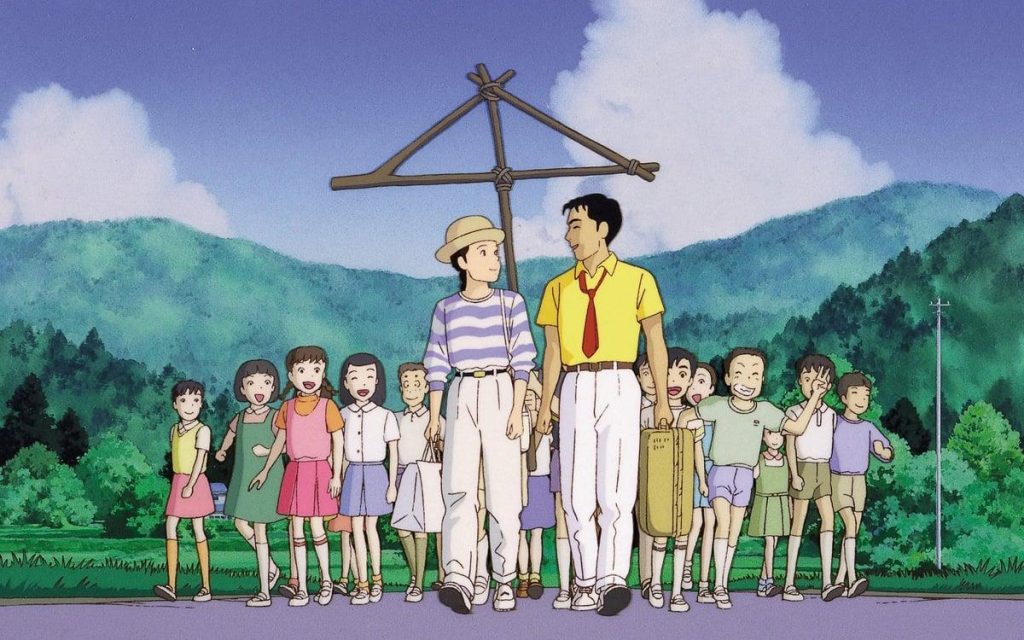Studio Ghibli Movies require no introduction to any ardent cinephile in the world. It is one of those rare film studios that has maintained impeccable quality throughout its entire filmography and has achieved commercial success along with universal acclaim. Hayao Miyazaki is considered the greatest animator of the world by many, audience, and critics alike. And there is no doubt about his investment and his craft with which he achieved this pedestal in life.
Most of us have ensured that we reward ourselves with the experience of Miyazaki’s films. On the other hand, we often tend to forget the other founding father of Studio Ghibli, Isao Takahata, who mentored Miyazaki in the initial days and partnered with him to create some of the finest films that the studio has to offer. It is also interesting to notice that Studio Ghibli, the mecca of animation founded by Hayao Miyazaki and Isao Takahata, boasts of filmography that is no less in quality, and arguably superior at times, even if Miyazaki or Takahata aren’t occupying the director’s chair.
Following is a rank-ordered list of all Studio Ghibli movies that you must watch urgently to contribute relevantly to cinematic discourse. Not just around animated cinema but also around cinema that deals with womanhood, femininity, environment, memories, war, and existentialism.
23. Tales from Earthsea (2006)
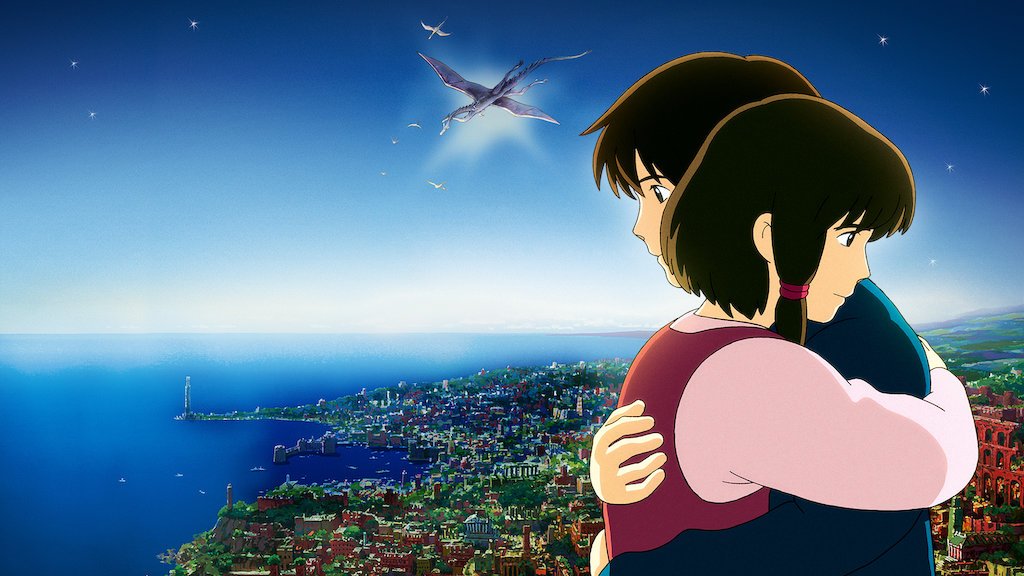
Tales from Earthsea would be the only Studio Ghibli film I couldn’t like. It is not because the film is outrightly bad in isolation but because it exists with a set of films that have a towering presence. Tales from Earthsea takes a lot of time to say very little. The adaptation of the source material comes out to be extremely diluted, edited, and hurried. The characters are not given enough time for a potent development. In addition to that, the film’s production value is inferior to all Studio Ghibli movies, and the primitive animation design surprises all the more with the realization that it is a film of the 21st century.
Related to Studio Ghibli Movies – 10 Overlooked Fantasy Films That You Probably Didn’t See
Nevertheless, it can be watched to determine Gorō Miyazaki’s remarkable progress that occurred with his next film, essentially because Gorō can be the potential successor to determine the course the Studio will take in the upcoming future.
Stream Tales from Earthsea on Netflix
22. The Cat Returns (2002)

The Cat Returns is a minor Ghibli film existing as a spin-off for a character from Whisper of the Heart, who makes a cameo appearance in the latter. This film is not as ambitious as one would come to expect from the anime heaven Studio Ghibli is.
Related to Studio Ghibli Movies – Tiger King [2020] Netflix Review – Deadly Abhorrent Creatures and Poor Big Cats
It is rather a sweet little serving comprising a mellow adventure, mild humour, and numerous elements for the gratification of all ailurophiles. The film lacks thematic depth but is abundant in wit. It can and must be watched when you cannot commit absolute emotional and intellectual investment to a film.
Stream The Cat Returns on Netflix
21. The Red Turtle (2016)
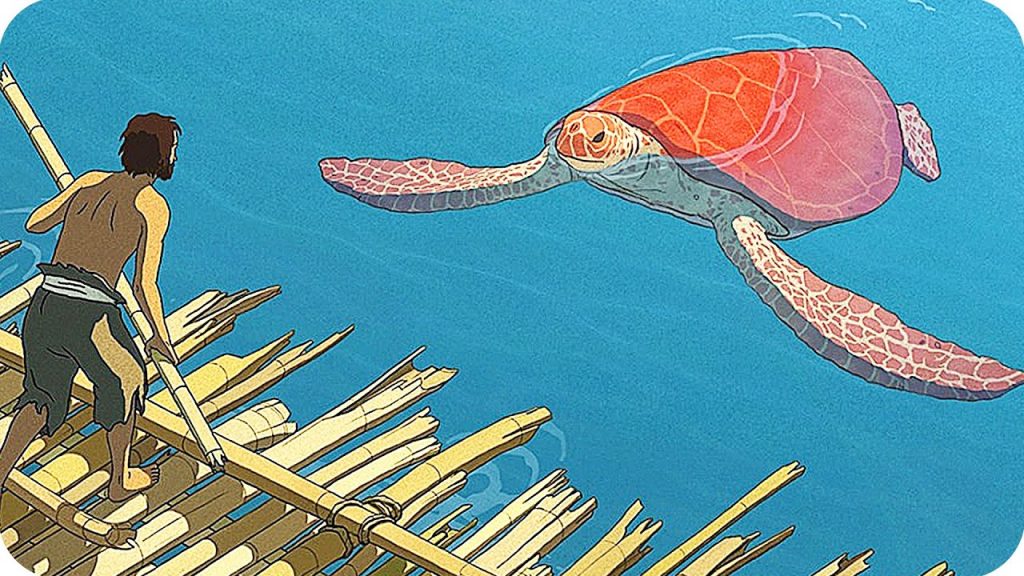
Michaël Dudok de Wit’s The Red Turtle is a vibrant display of melancholy and isolation that evolves into a tender drama film without losing much time in exposition. The lack of dialogues in the film work in its favour for they allow a concentrated viewing and separation of sensory experiences.
Related to Studio Ghibli Movies – 20 Must-See Films at JIO MAMI Mumbai Film Festival, 2016
However, I have a few reservations against the lack of density and scope in the plot chosen. The film steers in a rather unpleasant way and jump cuts dilute much of your interest. Nevertheless, The Red Turtle charms with its beauty, which is a beautiful mix of Studio Ghibli aesthetics and French animation.
20. Ponyo (2008)
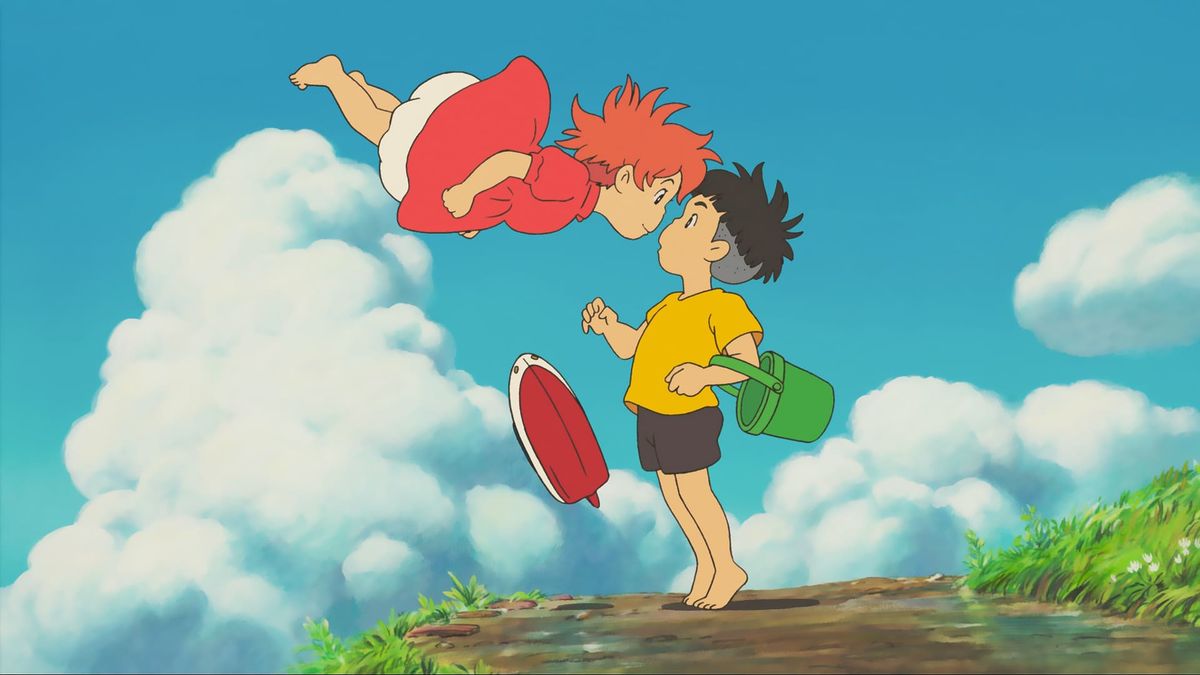
Miyazaki completely devotes himself to create a film for children and their sweet pleasures and delivers a Ponyo, which is a little less thematically dense as any of the auteur’s previous works in terms of aggression of expression but more cheerful and less concealed. Ponyo would be one of the most adorable characters ever created. Her innocent voice, her beautiful body language, her juggling transformations, all come together to serve a wonderful and charming experience. Isao Takahata’s 1973 short film Panda Kopanda and the Rainy-Day Circus serves as an important inspiration for the flood sequence.
19. The Secret World of Arrietty (2010)
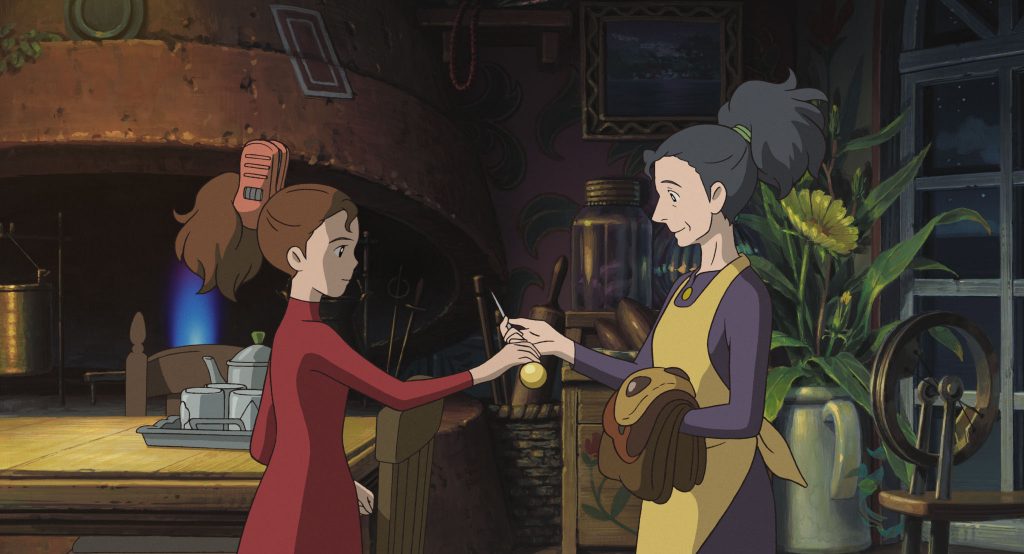
The Secret World of Arrietty is one of those rare films that respect physics. You only have to observe the intricate sound design and production and you will fall short of appreciation. Every frame is meticulously animated to mimic the difference in the scales of two worlds it encompasses.
The film takes care of the relative density of different items and their subsequent appearance as well as the sound they will generate in the minuscule world of Arrietty, compared to their appearance and the sound they generate in the regular world. Arrietty is a little film with little ideas of importance. It is neither too occupied with world-building nor too involved in convincing us of the same. Relationships are built for the sake of plot but are not progressed to work as a propellant. The biggest reason this film becomes worth a watch is its aesthetics.
18. Whisper of the Heart (1995)
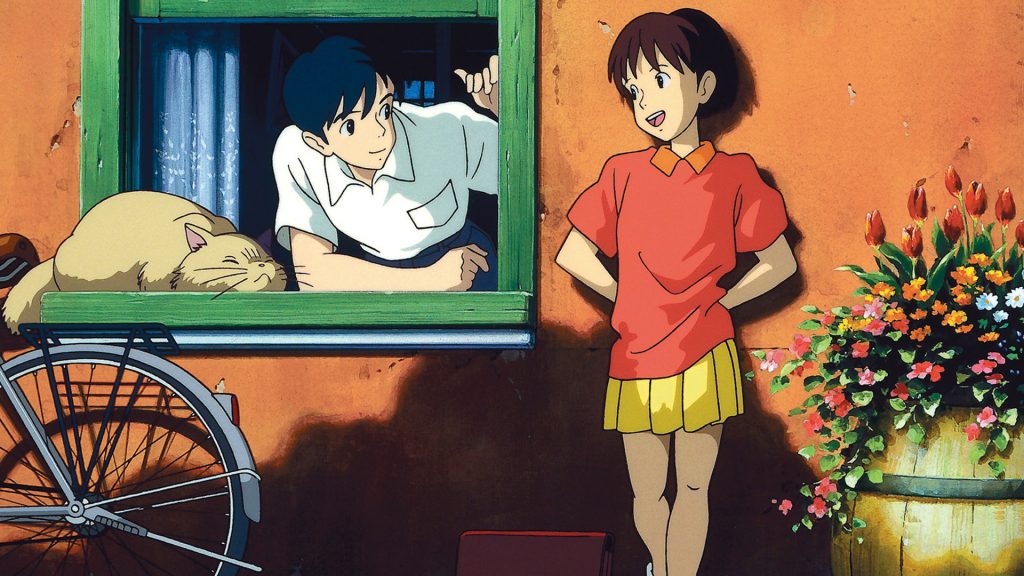
One of the overlooked merits of all Studio Ghibli animated dramas is how they animate real-life locations and incorporate them into their films to create mature offerings, even when they retain fantastical elements.
Also, Read : Pixar Finds A Groove On It’s B-Side With Luca (2019)
Whisper of the Heart is a beautiful coming of age drama that traces the early moods of an amateur writer and quite successfully establishes little motivations the mind of a child experiences for his/her efforts. The film encourages every artist to extract positive motivation from any source that is available for there is no fruit without effort. The spectrum of the mood of an early adolescent is carefully explored. Additionally, the film animates multiple real-life locations, escalating the interest of an audience.
The music of the film is minimal yet a very important aspect. The humour quotient is very natural and pleasing while the screenplay is respectful to the intellect of its audience. Whisper of the Heart was Yoshifumi Kondō’s debut as a director and his only film in the studio under a director’s profile. His subsequent unfortunate demise due to aortic dissection was a major blow to the studio as he was considered the potential successor to the founding fathers of Ghibli, Miyazaki & Takahata.
17. Porco Rosso (1992)
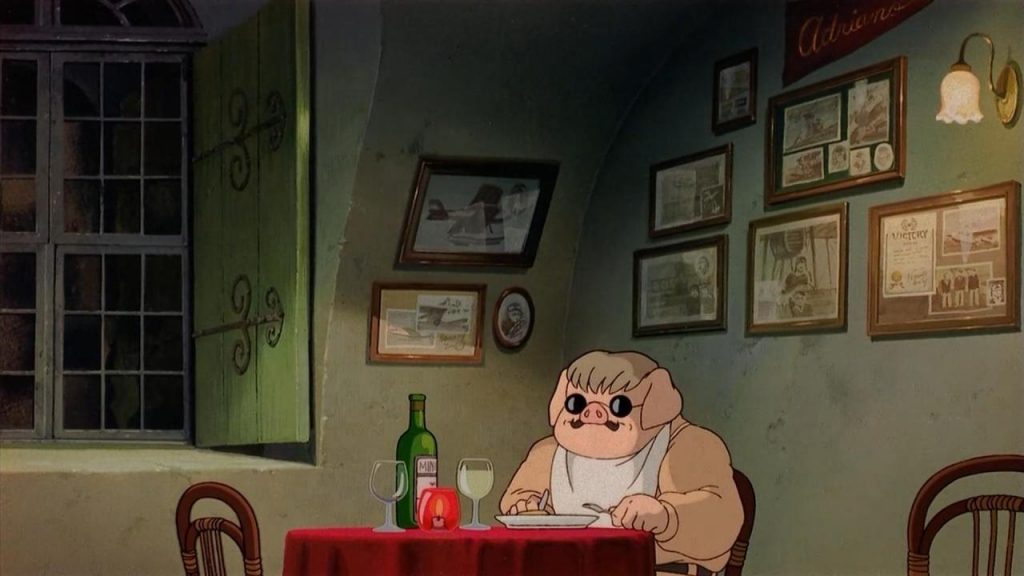
For films such as Porco Rosso, you have to accept the features of the film as given, without the expectation of an explanation. Porco Rosso remarkably captures Miyazaki’s fascination for aeroplanes, while also commenting upon the follies of international diplomacy. With the essence of Casablanca (1942), Porco Rosso manages to be an entertaining affair thoroughly.
When Porco tells an officer in the film how it is better to be a pig than a fascist, it appears as if Miyazaki is communicating to the power abusing states in the world, all at once. Porco Rosso is bold. And refuses to treat its audience as an immature lot. Hence, it works as much for an adult as it does for a kid.
Stream it on Netflix
16. When Marnie Was There (2014)

“When Marnie was there, she smiled while life drowned her in the tears of sorrow.”
Anna, in many ways, is the quintessential introvert protagonist, a kind that is not explored in cinema to its utmost potential. Passively touching the eventual outcome of absenteeism in parental roles, the film argues how happiness isn’t in its attainment but in the efforts carried out for the same.
Also, read the review of When Marnie’s was there (2014)
Hiromasa Yonebayashi’s aesthetics are unique when he is on the director’s chair. When Marnie Was There is cut from the same fabric as The Secret World of Arrietty when it comes to its production design and animation. The first act is committed to exploring the mystery of the protagonist while the second act commits itself to mystery building by pitching us a spectral yet amiable element vital to the film. The third act finally unravels the mystery in an exciting and melancholic way, terminating the film on the usual optimism Ghibli films end with.
Stream it on Netflix
15. Castle in the Sky (1986)
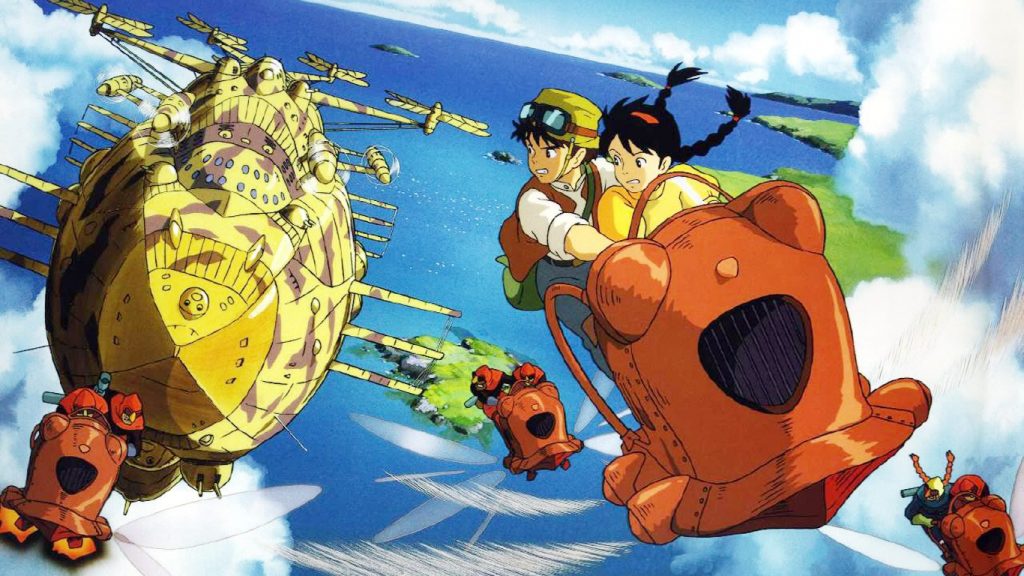
The first film to be animated under the banner of Studio Ghibli, Castle in the Sky (1986) is a beautiful fantasy adventure that lays out the Studio’s as well as the auteur’s vision for the films that were to follow. Castle in the Sky often appears to be a silent precursor to Spirited Away and a child that would grow up to give birth to Princess Mononoke and Howl’s Moving Castle. The film’s strength lies in its set of imaginative visuals that are aesthetically appealing and thematically relevant. Weaknesses only arrive in comparison to the marvellous films that were churned out later as Castle in the Sky is a triumphant debut.
Stream it on Netflix
14. Ocean Waves (1993)
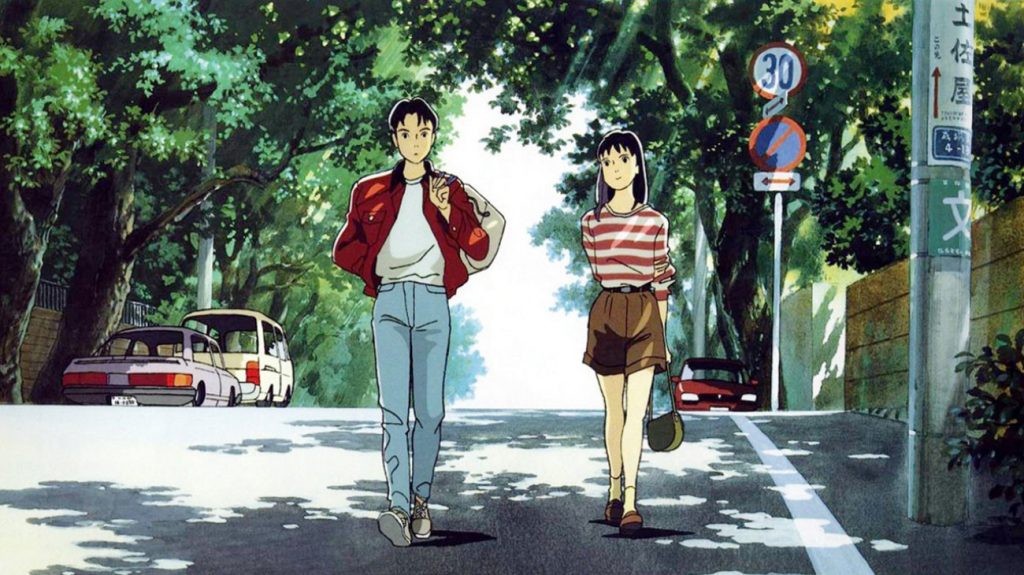
A beautiful aspect of this coming-of-age drama from Studio Ghibli is its unsanitized portrayal of bittersweet relationships individuals share that are quite relatable and heartwarming. Ocean Waves is an entertaining sketch that does not rely on excessive drama to elicit responses from its audience. The film often works as a source of heavy nostalgia due to its universality and the nature of events portrayed in it. Ocean Waves does complete justice to its name. It flows beautifully with its share of turbulence and calm.
13. Kiki’s Delivery Service
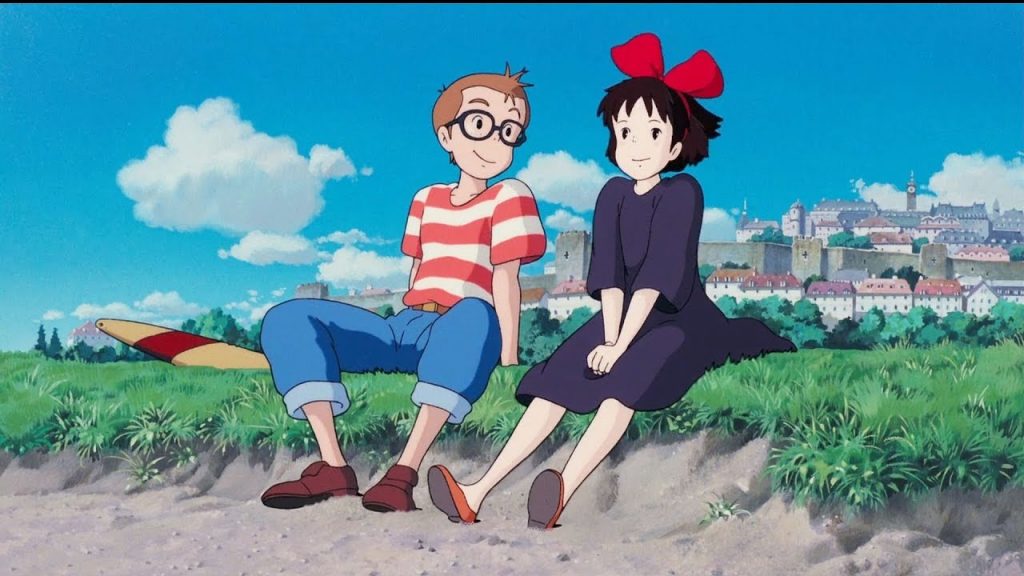
Rare are the films that never allow you to drop your smile even for a second. They don’t necessarily depend upon your immersion in the story, or mood, or the environment, they just have one motive and that is to make you happier than you currently are. Kiki’s Delivery Service does that while making sure that you learn an important lesson.
The film is a coming-of-age drama with a heavy dose of magical realism that entertains you with its scope. Kiki’s Delivery Service could have been one of Hayao Miyazaki’s dreams when he was a child. The film’s essence can be traced in Miyazaki’s 1988 film My Neighbor Totoro.
Stream it on Netflix
12. From Up on Poppy Hill (2011)
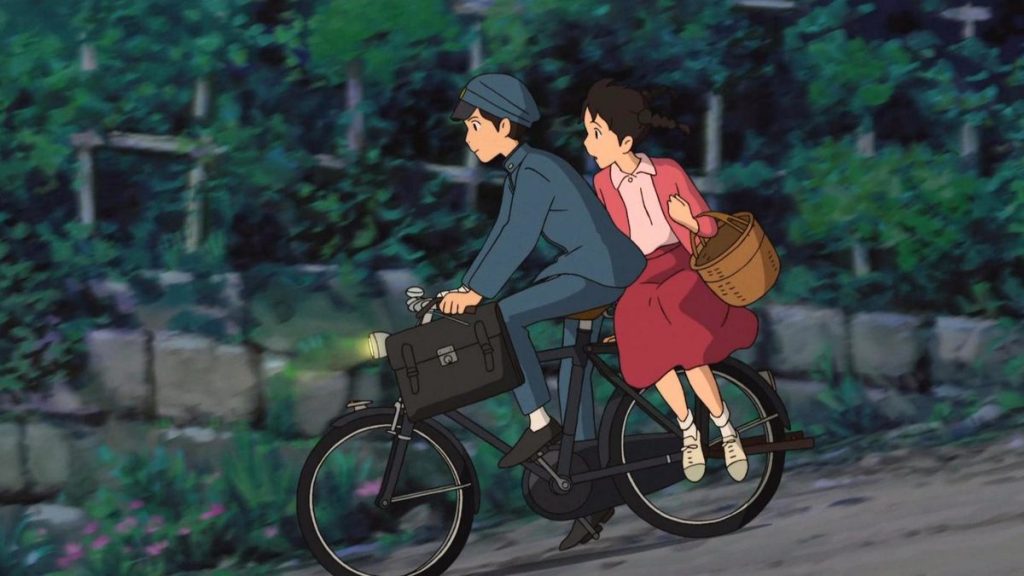
Gorō Miyazaki’s second venture ‘From Up on Poppy Hill’ is a massive improvement over his debut feature. Gorō manages to create a screenplay that has the essence of his father, also considering the film was scripted by Hayao himself, and yet, distinctive from the other films of the studio. From Up on Poppy Hill is about the restoration of one’s heritage amidst all leisure and turbulence of an ambitious life. It champions sweet romance of adolescence and sketches everyday adventures with gentle thrill. Consequently, the film becomes a charming affair and develops an immediate tryst with its audience due to its universality.
The importance of From Up on Poppy Hill is all the more elevated considering the next Studio Ghibli film is helmed by Gorō who is the de facto successor after Hayao’s retirement.
Stream it on Netflix
11. Nausicaä of the Valley of the Wind (1984)
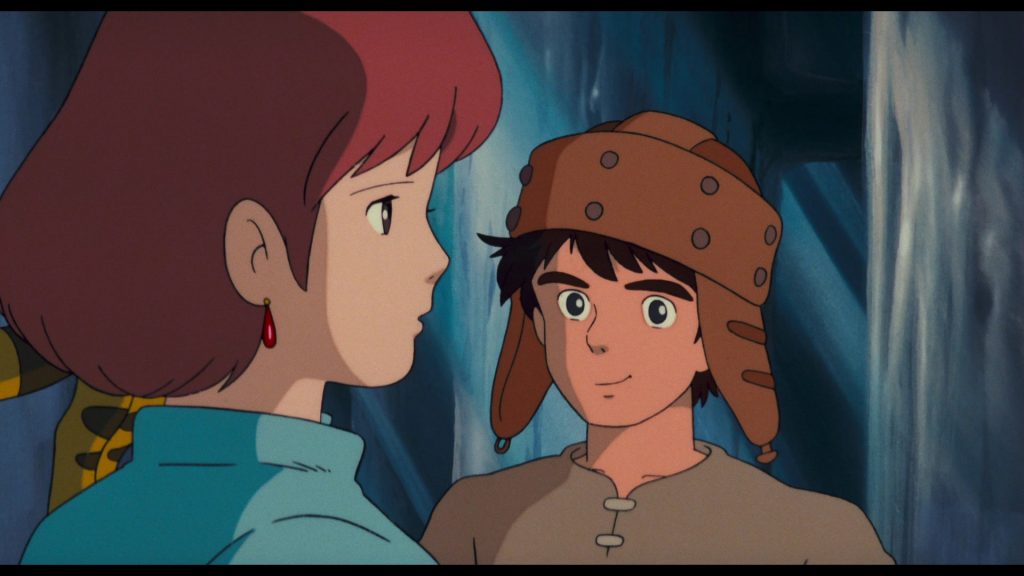
Nausicaä of the Valley of the Wind dwarfs the majority of post-apocalyptic films when it comes to originality of ideas and the importance of themes incorporated.
It works as a comment on industrialization, man’s excessive obsession with production, and extreme negligence of the environment, as well as an anti-war account of a hero’s attempt to sustain the deteriorating harmony between humans and nature. Miyazaki branches out his anti-imperialist and anti-capitalist sentiment into his later films Howl’s Moving Castle and Princess Mononoke, respectively, but Nausicaä of the Valley of the Wind confirms the principal source of his ideas.
One thing for which Studio Ghibli will always be underappreciated is its conscious choice of creating female protagonists in most of its films, who rise above petty gender norms and stereotypes and do things that are routinely heroic for male figures without begging for recognition. Studio Ghibli never tried to grant its characters freedom, it just realized that all its characters are free inherently.
Stream it on Netflix
10. The Tale of Princess Kaguya (2013)
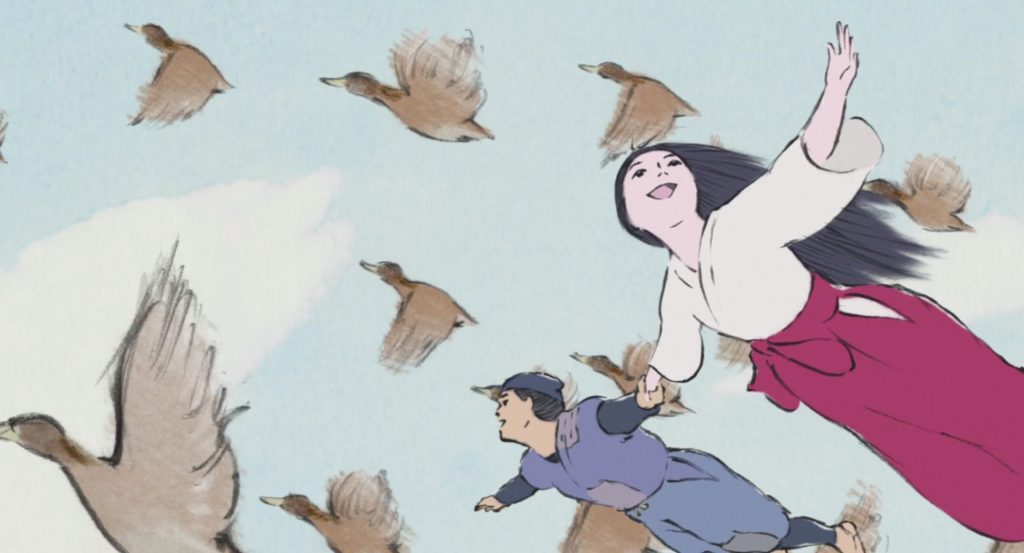
Isao Takahata’s final film reimagines The Tale of the Bamboo Cutter in the most beautiful way one can demand and elevates the filmmaker to a pedestal that is seldom achieved.
The Tale of Princess Kaguya speaks volumes of Takahata’s commitment to art. The cinematography of this piece is undeniably one of the most beautiful works that I have seen in animation films. There’s serene beauty in each frame. Animated by adapting Japanese ink style aesthetics, Takahata writes a screenplay that is drenched with profundity suitable to the contemporary time.
The film is a strong but patient critique of traditionalism and the discrimination incumbent to it, highlighting the perils of greed, subjugation, and patriarchy. A motif of all Takahata films is the drawbacks and outcomes of the widening gap between the rural and urban lifestyle of a developing Japan arguing how the act of departure from a rural milieu is not equivalent to an act of progress.
Stream it on Netflix
9. Pom Poko (1994)
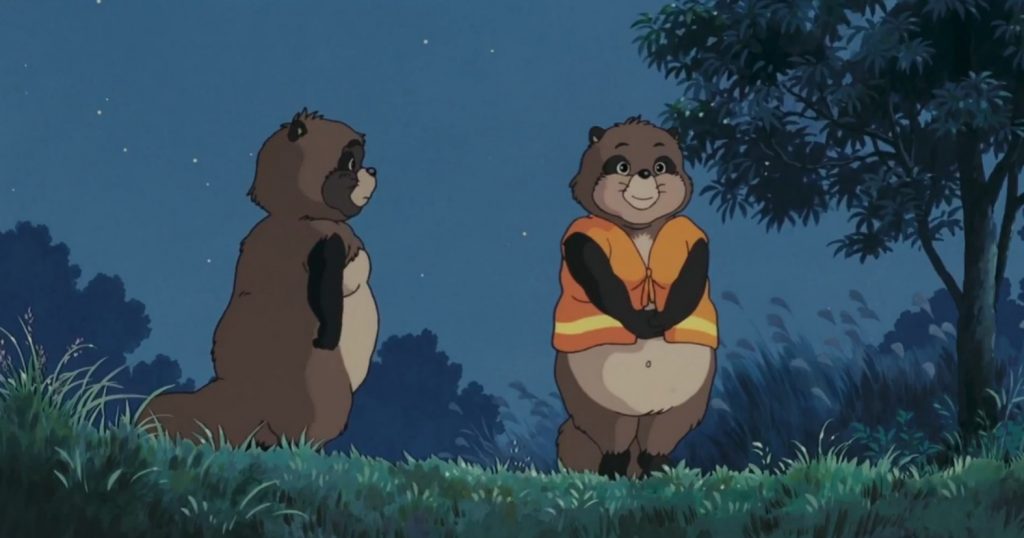
Pom Poko is an excellent example of how to adapt folk in a contemporary environment to advocate for a cause. With a screenplay that utilizes fantastical elements to create black humor, Pom Poko is not as children friendly as it looks. The film is committed to highlighting the social costs that are generated due to unhindered development projects, the ugly compromises that are made with nature in the name of progress, and the neglect many communities and species receive from the capitalist forces. But things do not move in the film in an optimistic way. The exposition doesn’t fail to include the helplessness people feel while fighting the powerful. Identity loss is a strong possibility.
Isao Takahata’s filmography is small yet dense. He has exhibited a great range as a filmmaker by working on almost every aspect of social life, and subsequent responsibilities. The gifts of being a human can be realized through his films as much as one realizes the vices unique to our existence. Pom Poko is another feather on the auteur’s cap.
Stream it on Netflix
8. Spirited Away (2001)
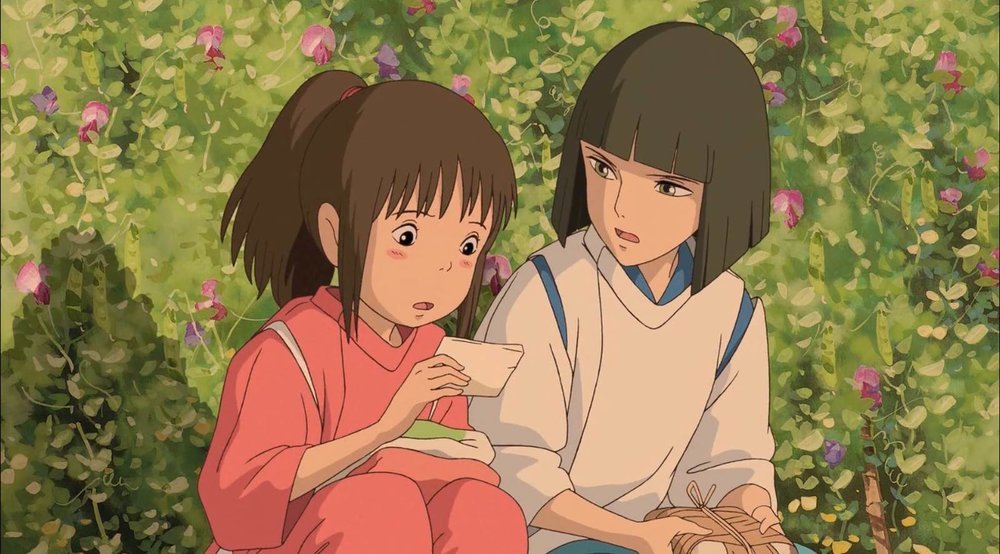
Spirited Away’s greatest achievement to me is that it combines surrealism with fantasy to make it consumable without dilution. Consequently, every member of the audience finds the liberty to interpret the material in a unique way and establish his/her/their own degree of resonance. The first time I watched Spirited Away, I was not able to comprehend the factors of its reputation. But it grew in me with time and maturity rewarded me with observations about multiple aspects of a wonderfully complex life Spirited Away manages to touch.
The allegory which stuck with me the most and reverberated again in my conscience was the allegory of how invariably challenges arise in our lives, without a prior warning, and how we must learn through them by confronting each. There is no way to prepare yourself beforehand in order to ride waves and climb mountains. Learning always happens in the process. But it is only possible when you get rid of prejudice and adopt innocence, acceptance, and determination.
A saga of overwhelming visuals and profound themes, Spirited Away will be one of the greatest films you will ever see. But it is not Miyazaki’s zenith, I am afraid.
Stream it on Netflix
7. Howl’s Moving Castle (2004)
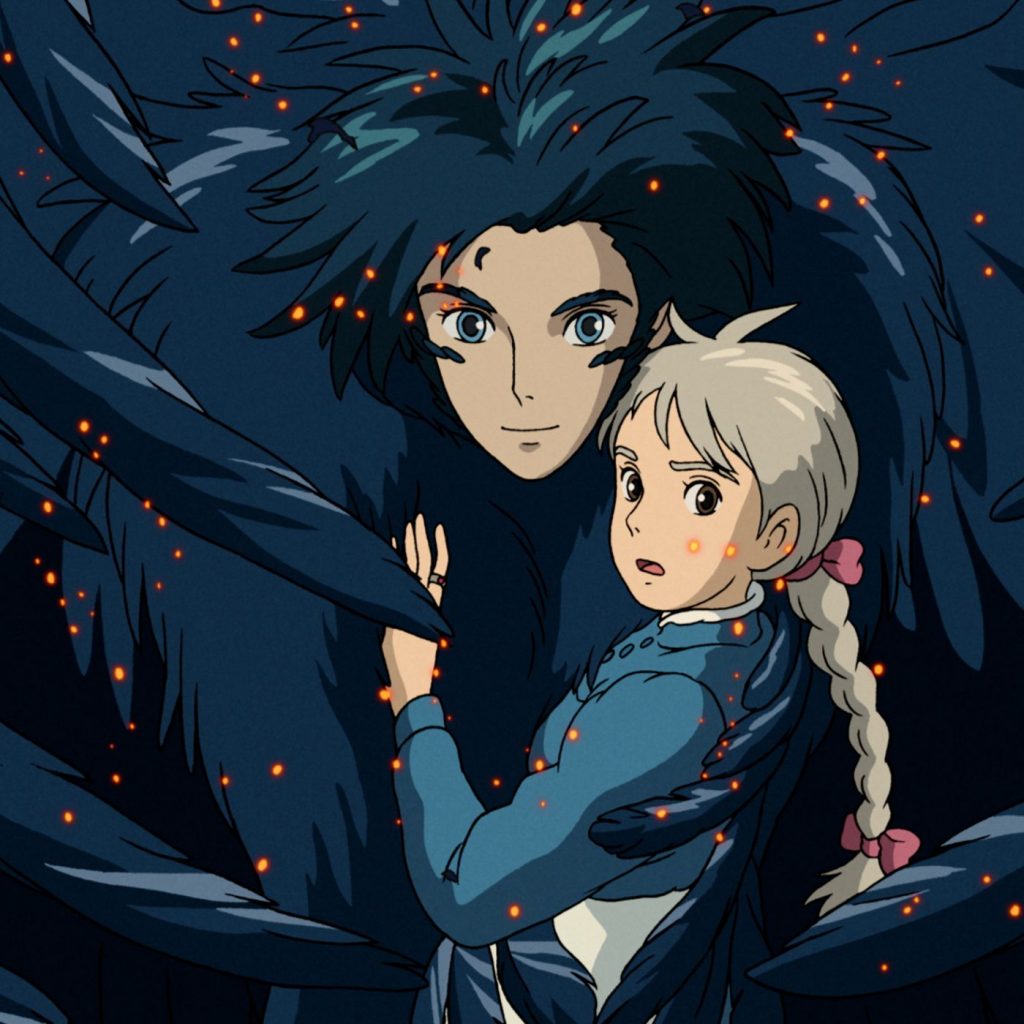
Howl’s Moving Castle is often quoted to be Spirited Away’s rehash. It is plausible since the latter’s presence sprawls across the globe and has always been the first Miyazaki film anyone experiences. Contrary to all criticism, I found something extremely unique and layered in Howl’s Moving Castle as it concluded. It is Miyazaki’s most angry film of his career. He hid his politics in the veil of magic such that the viewers have the liberty to uncover what they find intriguing and interpret what they felt the most while watching the film. The narrative is fluid with a low degree of exposition and a high count of events. Howl’s Moving Castle talks about the loss of identity, innocence, optimism, and resources that occurs due to violent pursuits of states while serving a satisfactory dose of wit and humour.
Stream it on Netflix
6. Princess Mononoke (1997)
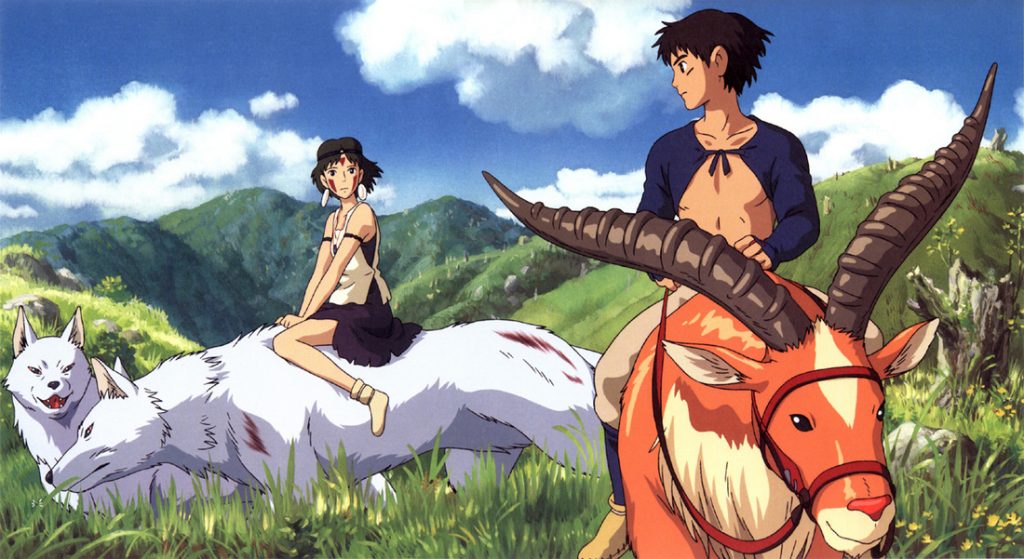
It is pure wonderment to even imagine that Princess Mononoke was conceived in a mind(s), and finally adapted onscreen in an as unbiased way as possible, devoid of sugared compassion or bitter enmity for any side.
An epic film inclusive of countless issues that plague both, an industrial and post-industrial society, the latter of which is ours, Princess Mononoke has the gut to make its protagonist strive for peace over vengeance. It will continue to attract countless thematic studies, of its environment, period, characters, and elements, as each aspect represents an essential social allegory. There is empathy in every character, and every character has an ideal to strive for. Motivations are clearly defined and purely rational at each end. No one is divine but no one is a devil either. The lack of sustainability in our economic pursuits is the only demon to be dealt with. Princess Mononoke has no intention to substantiate myths of spirits, gods, and ghosts. Its only motive is to establish the idea that civilizations cannot flourish at the cost of each other. The prosperity of one species traded with the currency of the lives of others is a volatile variable that will collapse onto itself before it is even achieved in its complete measure.
On the other hand, we have brilliant art direction, and jaw-dropping visuals composed to elevate the aesthetic appeal of the film. Action sequences are precise with microscopic attention to detail and are shot with aggressive cinematographic angles to maintain engagement.
Stream it on Netflix
5. My Neighbours The Yamadas
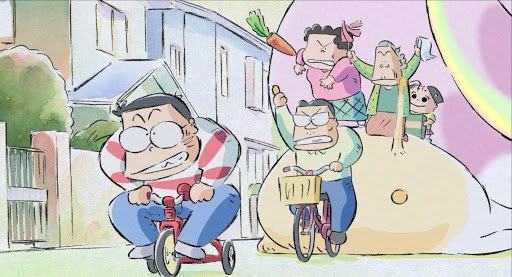
My Neighbours The Yamadas is a film so personal, so serene, and so unadulterated that you are gratified even if you are merely repeating the same sequences. What makes My Neighbors the Yamadas so memorable is that its gaze is fixed to the most random and minimal events of life we generally tend to give not much weight to. This film is nuanced and lacks any larger than life scheme. It is sometimes a reflection of obligations that come from gender roles, sometimes a tussle of generational values, sometimes a story of familial bond, and sometimes nothing but fantastical fun. It is soft when it has to, and contemplative when you may not expect. Takahata not only uses metaphors but also employs multiple technical devices to set our mood. He changes animation style, links episodes through idiosyncratic elements, and also inserts (dare I say) a small dose of surrealism. He uses his knowledge to give a humorous shape to the most mundane of moments. He ensures that engagement is sustained throughout.
One of my friends pointed out how My Neighbours the Yamadas may appear to be sweet and comic but it is highly melancholic in many ways. The melancholy is derived from the resonance we may find with the film. The burden of our mothers, with assumed roles of homemaker, the burden of our fathers, with assumed roles of protector, and our own generational gap with them that is continuously receding. But most importantly, it reminds us of our humanity within a familial set up in the social sphere.
Stream it on Netflix
4. My Neighbour Totoro (1988)
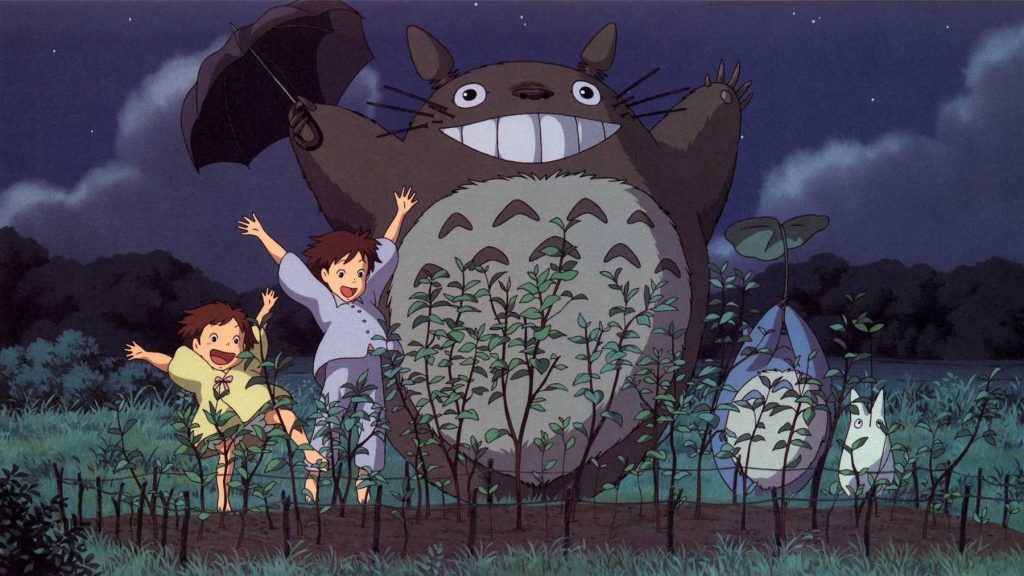
Totoro exists in an unbelievably plausible realm of the universe where reality exists in segregation from fantasy such that its rational identity is not compromised at any step, while it simultaneously dances with magic in harmony to suggest an ideal state. Yes, ‘My Neighbor Totoro’ is an insurmountable achievement in the world of filmmaking, and I say this without a hyperbolic connotation.
The film practically subverts the magical horror genre by using some of its tropes in conventional ways but by changing the response of the characters to those tropes. Mei knows she has moved into a haunted house and she is scared as well, committing to the child in her, but she also has the zeal to catch one of these monsters. The mystery is her fascination and unusual creatures are her playmates. How much of this occurs in imagination and how much is a part of her reality shall not be given a deterministic thought because the charm of present moments shall be relished without any adulteration of the consciousness. There is not an absolute absence of conflict. Sour events happen up to only the degree that they should, majorly. Lost children are as much found as they are lost forever. Deaths from diseases happen as much as they don’t. Traumas are as minor as they are major. There is always an equal-unequal another side to all facets of life. Totoro is just a window to that other side without a hint of contrivance.
Watching My Neighbour Totoro is not just an exercise for happiness. It is like watching your own heart pump blood to all your organs in your body to keep you alive.
Stream it on Netflix
3. The Wind Rises (2013)
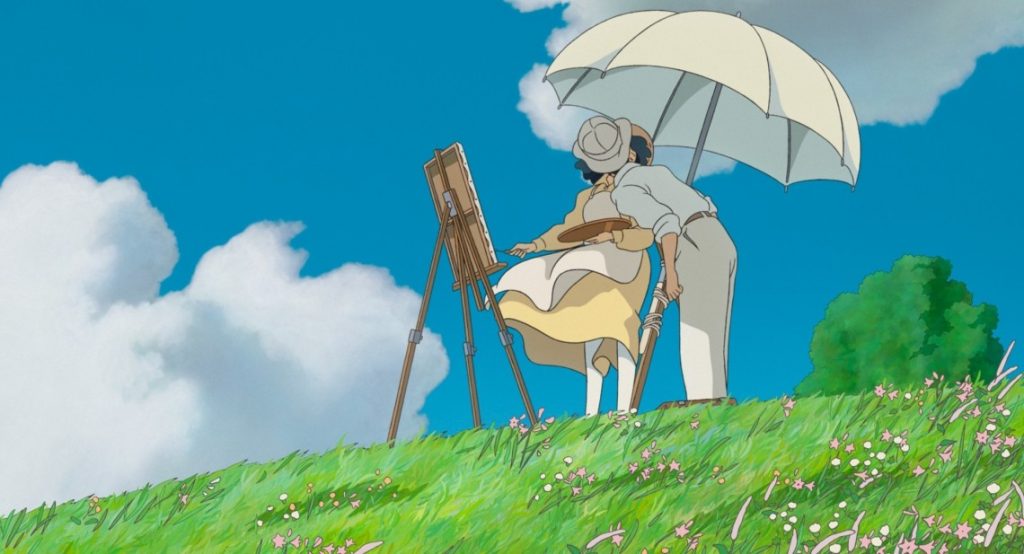
Hayao Miyazaki’s The Wind Rises (2013) is the most ambitious animation film I have seen, which comes at par with Katsuhiro Otomo’s Akira (1988). One would argue what is it that makes The Wind Rises more ambitious than Grave of the Fireflies (1988), which recreates the grounded horrors of war without talking about it actively, or La Casa Lobo (2018), which pushes the grammatic boundaries of the medium itself, or any other relevant name which contributed to the cause of storytelling and the medium adopted. To answer the conundrum, I take a personal route.
The Wind Rises explores the universe that exists within an individual. It attempts to understand the passion and the love that stems from it. Passion is one of the most complex states of mind purely because it has no singular conveyance of expression. Passion can be rewarding and taxing in equal measures. It can lead to a direct conflict with one’s ideology but prevent the individual from abandoning the passion outrightly, thwarting him/her/them into a suffocating space where artistic existence battles with emotional existence to achieve dominance.
The Wind Rises progresses patiently to capture the growth of an individual and his encounters without dilution. Compromises are avoided in the screenplay to such an extent that the film inherits two notably different tones for its two halves. But that’s how life is, multidimensional, incomprehensible in its entirety, and most importantly, unaligned with our expectations.
Stream it on Netflix
2. Grave of the Fireflies (1988)
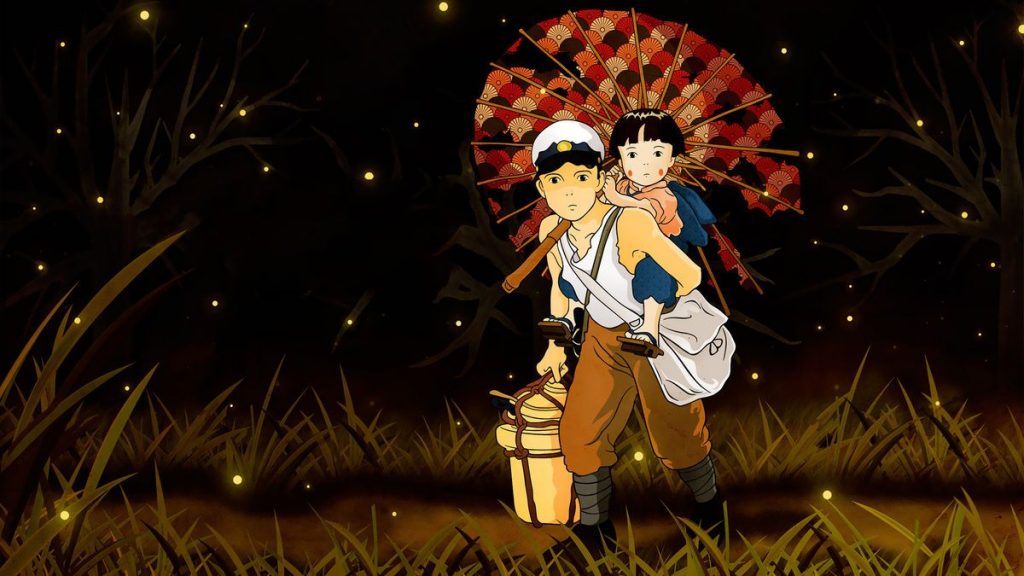
The window for criticism in a film like Grave of the Fireflies is congested. It has been discussed and dissected multiple times. While global critics traced one of the strongest anti-war statements in the history of cinema in this film, Takahata was inclined against any such interpretation. His primary focus was portraying the relationship of a brother and sister who are pushed into a failed life, in his own words. The tale is harrowing and there is absolutely nothing in the film that can cheer an audience. It is an instant reminder of how social apathy continues to push lives into oblivion. How happiness is still a luxury.
Recommended – 10 Distressing films on the Potential Aftermaths of a Nuclear Holocaust
Studio Ghibli’s Grave of the Fireflies has the power to make anyone humbler than before. Even though the word of a creator is the last word, the anti-war interpretations cannot be denied. Costs of war and its perils do not fall on kings and policymakers. It is always the children, youth, men, and women who bear the lethal burden. Read this interview on the development of the film to know how Grave of the Fireflies is a revolutionary piece of cinema.
1. Only Yesterday (1991)
Only Yesterday is an extremely subtle and potent drama that waters your soul with nostalgia and leaves you in deep retrospection. The childhood of an adult is not a detailed narration of every event that he/she once lived with an accuracy that dissolves all differences between the past and present. It is rather a reminiscence with incomplete conclusions, sudden terminations, evident biases, and blurry details. A collection of the most important things that we have chosen to remember along with a few things that never leave our mind. Only Yesterday is doubtlessly a masterpiece.
The vision with which the film is animated is bewildering. When Taeko Okajima recollects outdoor events, backgrounds can be seen in watercolour animation with less precision and occupancy. At the same time, indoor events are much more detailed. The film patiently condenses the course of life and passively hints at everything a girl experiences until adulthood. There are multiple themes that are explored through the recollection of ordinary life. Any further exposition will only increase the risk of spoiling the experience. It is no surprise if Only Yesterday triumphs over every Studio Ghibli film and emerges at the zenith.
Stream it on Netflix
Recommended – The 15 Best Studio Ghibli Movies


